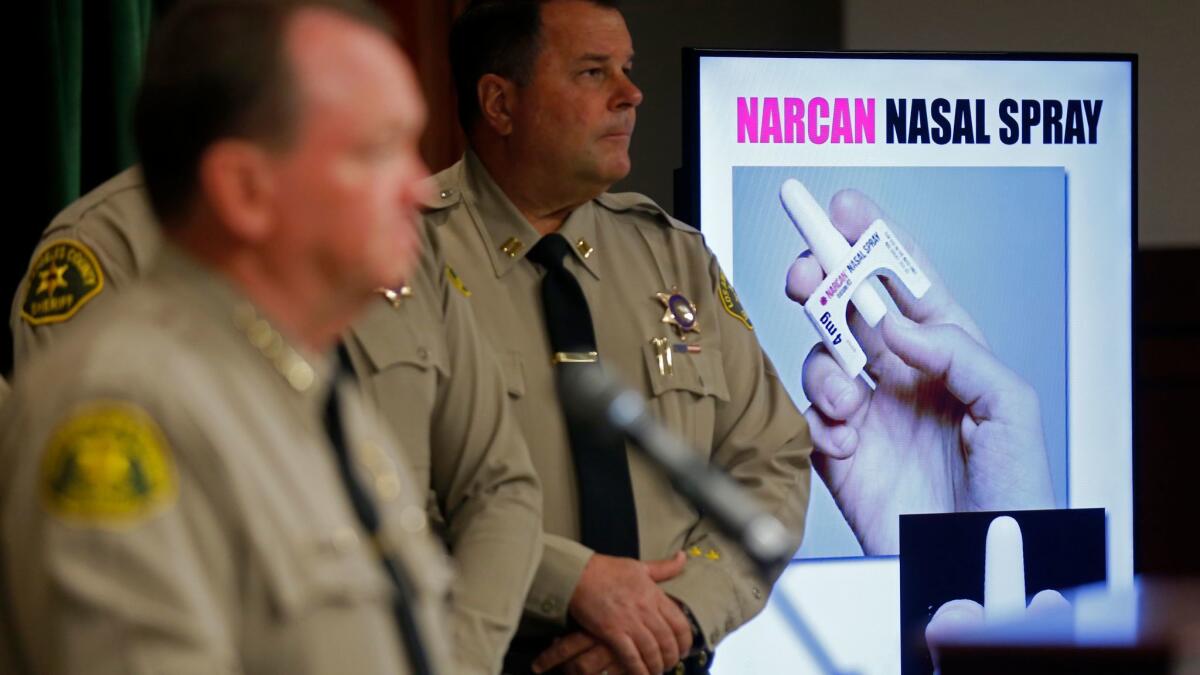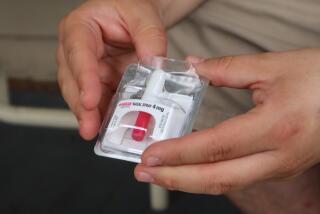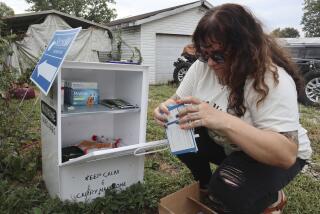L.A. sheriff’s deputies to carry nasal spray to treat opioid overdose victims

- Share via
The Los Angeles County Sheriff’s Department will supply thousands of field deputies with the nasal anti-opioid spray naloxone to help prevent overdose-related deaths, officials announced Thursday.
Next week, the department will begin issuing more than 1,200 single-dose spray dispensers — sold under the brand name Narcan — to field deputies in Santa Clarita, Crescenta Valley,and East Los Angeles, as well as to deputies patrolling community colleges and parks.
An additional 5,000 kits will be issued to deputies across the county in the next few months, thanks to a grant from the California Department of Public Health. A two-pack of the spray kits costs $75.
“We must… gather the means necessary to insulate L.A. County from the opioid- and heroin-related devastation that we have seen in other parts of the country,” Sheriff Jim McDonnell said Thursday at a news conference announcing the pilot program.
Reports of opioid-related deaths have increased across the nation over the last several years, with fatalities largely concentrated across New England and the Midwest, according to the national Centers for Disease Control and Prevention. Nationally, an average of 91 people per day die from opioid- or heroin-related overdoses, according to the center.
Though fatality rates are lower, Los Angeles County has not been spared from the epidemic. According to the county coroner, 408 people were reported to have died from prescription opioid-related overdoses in 2014. Between 2006 and 2013, the county saw a 170% increase in opioid-related emergency room visits, the Los Angeles County Department of Public Health reported.
Law enforcement are often first to arrive on the scene of a medical emergency, but until now have not been equipped with the means to immediately respond to opioid overdoses, McDonnell said. Narcan, which McDonnell said requires minimal training to use and is “almost risk-free,” will allow field deputies to administer treatment with a single puff through an individual’s nostril, blocking the effects of an opioid overdose.
The department’s efforts were spurred in part by Cmdr. Judy Gerhardt, whose 23-year-old nephew Maxwell Baker died in December of an opioid overdose. While mourning his death, Gerhardt and her daughter, Michelle Payne, who also works for the Sheriff’s Department, began researching overdose treatment and helped craft the pilot program.
“I am the face of what opioid addiction does to a family,” Gerhardt said at the press conference.
Gerhardt said the department hopes the program will help educate people and remove the stigma associated with opioid addiction. Her nephew, she said, was a “sweet young man” with aspirations to become a doctor.
The Sheriff’s Department’s effort follows a statewide movement to make naloxone more accessible. In 2014, Gov. Jerry Brown signed a law that allows pharmacists to provide the drug without a prescription.
This spring, the Los Angeles Police Department and the Los Angeles Fire Department partnered to provide police officers with naloxone to more quickly respond to opioid overdoses.
Fire officials said increased use of the nasal spray will also ease the burden on its Emergency Medical Services first responders.
Counties beyond Los Angeles have also begun issuing the drug to law enforcement officers. The Orange County Sheriff’s Department has administered Narcan 21 times over the last year and a half, Lieutenant Lt. Fred Thompson said. The medication was successfully used in 20 of those cases, he said.
“Instead of sitting there and watching the life drain out of someone,” said Thompson, officers “have something they can use to help.”
More to Read
Sign up for Essential California
The most important California stories and recommendations in your inbox every morning.
You may occasionally receive promotional content from the Los Angeles Times.










